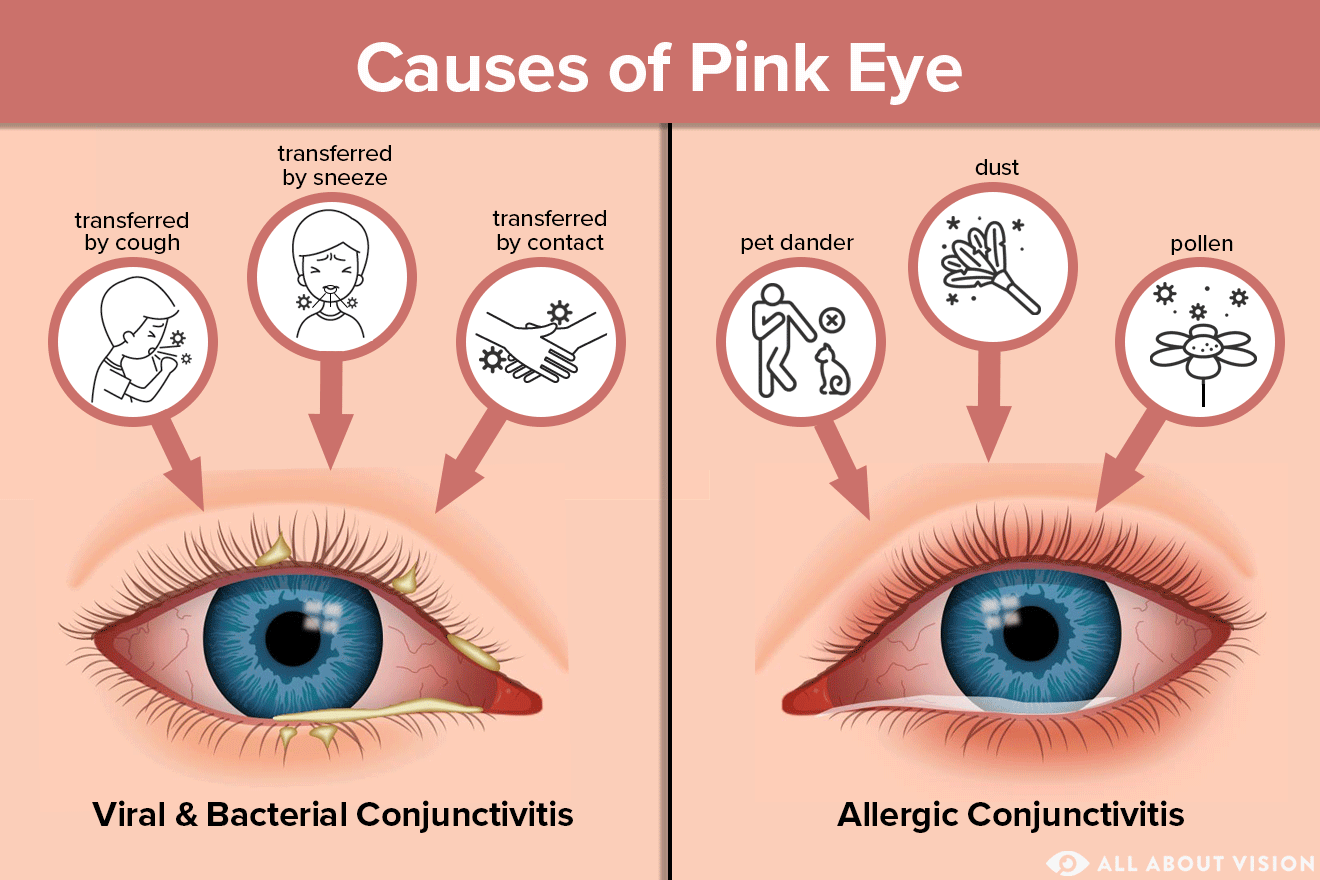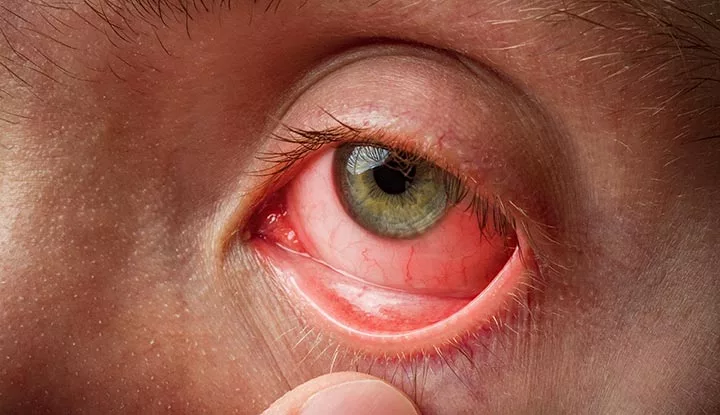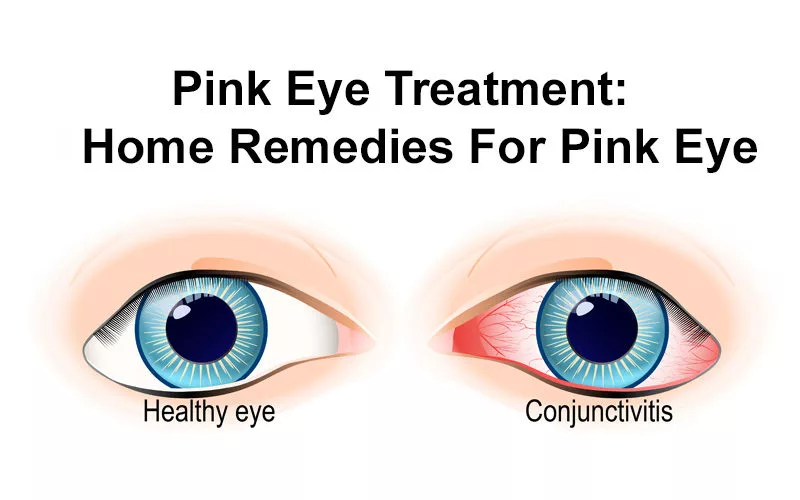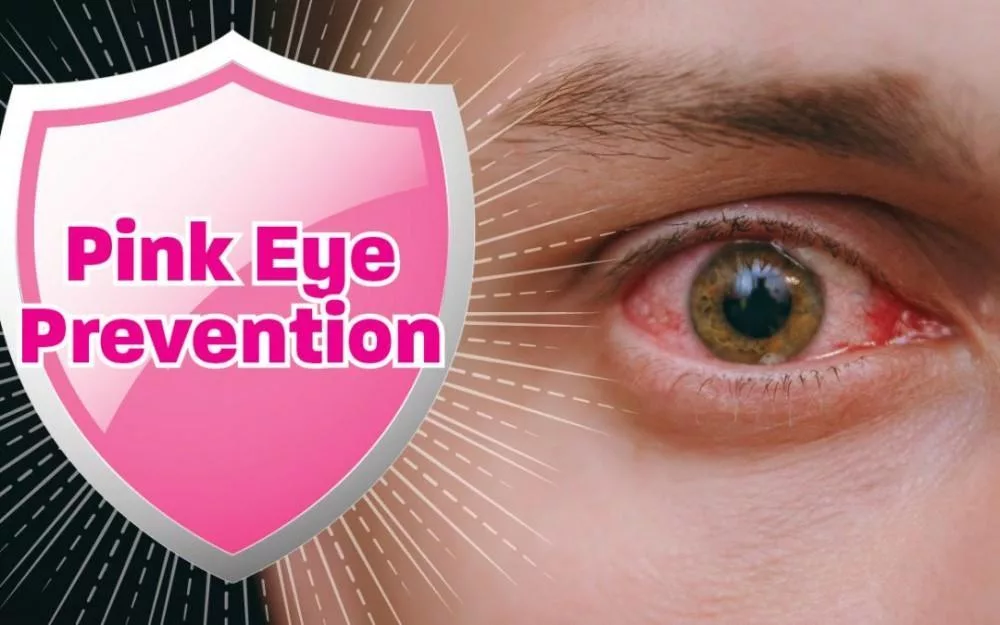What is Pink Eye? A Deep Dive into Viral Conjunctivitis
Pink eye, medically known as conjunctivitis, is a common eye condition that can affect people of all ages. This condition is characterized by the inflammation of the conjunctiva, a thin, transparent membrane that covers the white part of the eye and lines the inner surface of the eyelids. Pink eye can be caused by various factors, including infections, allergies, or irritants. In this comprehensive guide, we will delve into the causes, symptoms, treatment options, and preventive measures for pink eye.
Types of Pink Eye

Pink eye (conjunctivitis) can occur in several different forms, each with its own causes and characteristics. Understanding the different types of pink eye is essential for proper diagnosis and treatment. Here are the main types of pink eye:
-
Viral Conjunctivitis
- Cause: Viral conjunctivitis is primarily caused by various viruses, with adenoviruses being the most common culprits. It can also be associated with the same viruses responsible for the common cold or upper respiratory infections.
- Characteristics:
- Highly contagious.
- Often begins in one eye and can spread to the other.
- Watery discharge is common.
- May be accompanied by symptoms of a cold, such as sneezing and a runny nose.
- Treatment: There is no specific antiviral medication for viral conjunctivitis. Treatment mainly involves supportive care to alleviate symptoms and prevent spreading. Hand hygiene is crucial to prevent transmission.
-
Bacterial Conjunctivitis
- Cause: Bacterial conjunctivitis is primarily caused by bacteria, most commonly Staphylococcus or Streptococcus species. It can result from poor hygiene, contaminated objects, or contact lens-related issues.
- Characteristics:
- Often affects one eye initially but can spread to both.
- Sticky yellow or green discharge, especially upon waking.
- Crusting of eyelashes.
- Treatment: Antibiotic eye drops or ointments prescribed by a healthcare provider can effectively treat bacterial conjunctivitis. It’s crucial to complete the full course of antibiotics as prescribed.
-
Allergic Conjunctivitis
- Cause: Allergic conjunctivitis is triggered by allergens, such as pollen, pet dander, dust mites, or certain chemicals. It is not contagious.
- Characteristics:
- Affects both eyes simultaneously.
- Itchy, watery eyes are prominent symptoms.
- May occur seasonally with exposure to specific allergens.
- Treatment: Avoiding allergens when possible is key. Over-the-counter or prescription antihistamine eye drops can help alleviate symptoms. In some cases, prescription-strength steroid eye drops may be necessary.
-
Irritant Conjunctivitis
- Cause: Irritant conjunctivitis is not caused by an infection or allergen but results from irritation due to foreign substances or environmental factors.
- Characteristics:
- It can affect one or both eyes.
- Symptoms occur in response to specific irritants, such as smoke, chlorine in pools, or exposure to chemicals.
- Treatment: The primary treatment is to remove or avoid the irritant causing the symptoms. Using artificial tears can help soothe the eyes.
-
Neonatal Conjunctivitis
- Cause: Neonatal conjunctivitis occurs in newborns and can be caused by various factors, including maternal infections (e.g., chlamydia or gonorrhea), chemical exposure during birth, or blocked tear ducts.
- Characteristics:
- Symptoms may appear shortly after birth or within the first month of life.
- Can lead to severe eye complications if not treated promptly.
- Treatment: Treatment depends on the underlying cause. It often involves antibiotics, topical medications, or surgical intervention.
-
Giant Papillary Conjunctivitis (GPC)
- Cause: GPC is an allergic response that typically occurs in individuals who wear contact lenses, especially soft contact lenses.
- Characteristics:
- Symptoms include itching, redness, and the sensation of a foreign body in the eye.
- Tiny, raised bumps (papillae) form on the inside of the upper eyelid.
- Treatment: Treatment involves discontinuing contact lens use, switching to daily disposable lenses, and using antihistamine eye drops. In severe cases, a healthcare provider may prescribe steroid eye drops.
It’s important to note that proper diagnosis by a healthcare provider is essential for determining the type of pink eye and initiating appropriate treatment. Additionally, some forms of pink eye, such as viral and bacterial conjunctivitis, can be highly contagious, so taking precautions to prevent its spread is crucial.
Pink Eye Causes

Understanding the specific cause of pink eye is essential for proper diagnosis and treatment. Here are the common causes of pink eye:
-
Viruses
As mentioned earlier, viruses are a common culprit, particularly adenoviruses. Viral pink eye can accompany symptoms of a cold or respiratory infection and is highly contagious.
-
Bacteria
Bacterial conjunctivitis is often caused by Staphylococcus or Streptococcus bacteria. Poor hygiene, such as not washing hands or sharing contaminated items, can lead to bacterial pink eye.
-
Allergens
Allergic conjunctivitis is triggered by allergens like pollen, pet dander, or dust mites. When the conjunctiva reacts to these allergens, it results in the characteristic redness and itching associated with pink eye.
-
Irritants
Irritant conjunctivitis occurs when the eye is exposed to substances that can cause irritation, such as smoke, chlorine, or chemical fumes. It’s not an infection but can mimic the symptoms of other types of pink eye.
Pink Eye Symptoms

Pink eye can manifest with a variety of symptoms, and the specific symptoms you experience may vary depending on the underlying cause of the condition. Here are some common pink eye symptoms:
Common Signs
- Redness: The whites of the eyes may appear pink or red.
- Irritation: Affected eyes may feel itchy, burning, or gritty.
- Tearing: Excessive tearing or watery discharge.
- Discharge: Yellow or green discharge, particularly in bacterial conjunctivitis.
- Swelling: Swelling of the eyelids or conjunctiva.
- Sensitivity to Light: Photophobia, or sensitivity to light.
- Blurry Vision: Vision may be temporarily blurred.
Differentiating Symptoms
To determine the type of pink eye, consider the specific symptoms:
- Viral Conjunctivitis: Often starts in one eye and spreads to the other. Watery discharge and sensitivity to light are common.
- Bacterial Conjunctivitis: Sticky, yellow or green discharge, usually in one eye. Crustiness upon waking is common.
- Allergic Conjunctivitis: Itchy, watery eyes affecting both eyes simultaneously. Often accompanied by other allergy symptoms like sneezing and a runny nose.
- Irritant Conjunctivitis: Occurs in response to a specific irritant, with symptoms limited to the affected eye.
How to Diagnose Pink Eye?

If you suspect you have pink eye, it’s essential to seek a diagnosis from an eye care professional. They will examine your eyes and review your symptoms to determine the type of pink eye and its underlying cause.
The diagnostic process may involve:
- Visual examination of the eyes.
- Collecting information about symptoms and their onset.
- Swabbing the conjunctiva for laboratory testing in cases of bacterial conjunctivitis.
- Allergy testing for allergic conjunctivitis.
Once the diagnosis is confirmed, appropriate treatment can be prescribed.
Pink Eye Treatment

The treatment for pink eye depends on the underlying cause of the condition, whether it’s viral, bacterial, allergic, or related to irritants. Here are the common treatment approaches for each type:
Home Remedies
- Warm Compresses: Applying a warm compress to closed eyelids can help relieve discomfort and reduce crustiness, especially in bacterial conjunctivitis.
- Artificial Tears: Lubricating eye drops or artificial tears can help relieve dryness and soothe irritation in all types of pink eye.
- Cold Compresses: For allergic conjunctivitis, cold compresses can reduce itching and swelling.
- Antihistamines: Over-the-counter or prescription antihistamine eye drops can alleviate symptoms of allergic conjunctivitis.
Medications
- Antibiotics: Bacterial conjunctivitis is treated with antibiotic eye drops or ointments. It’s essential to complete the full course of antibiotics as prescribed.
- Antiviral Medications: There are no specific antiviral drugs for viral conjunctivitis, but supportive care can be provided to alleviate symptoms.
- Topical Steroids: Severe cases of allergic conjunctivitis may require prescription-strength steroid eye drops to reduce inflammation.
Prevention of Complications
In some cases, pink eye can lead to complications like corneal inflammation or even vision problems. It’s crucial to follow your healthcare provider’s advice and attend follow-up appointments to monitor progress and prevent complications.
Preventing Pink Eye (Conjunctivitis)

Prevention is key when it comes to pink eye, especially since some forms are highly contagious. Preventing pink eye or conjunctivitis, involves taking proactive measures to reduce the risk of infection and minimize exposure to irritants and allergens. Here are some steps you can take to prevent pink eye:
Hygiene Measures
- Handwashing: Regularly wash your hands with soap and water, especially after touching your eyes or face.
- Avoid Touching Your Face: Refrain from touching your eyes, nose, and mouth with unwashed hands.
- Proper Contact Lens Care: If you wear contact lenses, follow strict hygiene practices, including regular cleaning and disinfection of lenses.
Avoiding Allergens and Irritants
- Allergen Avoidance: Identify and avoid allergens that trigger allergic conjunctivitis. This may involve keeping windows closed during high pollen seasons or minimizing contact with pets if you’re allergic.
- Irritant Avoidance: Take precautions to protect your eyes from irritants such as wearing protective eyewear when working with chemicals or swimming in chlorinated pools.
Preventing the Spread of Infection
- Isolation: If you have viral or bacterial conjunctivitis, stay home from school or work until your eye is no longer red or discharging. Follow your healthcare provider’s guidance.
- Avoid Sharing Personal Items: Do not share towels, washcloths, eye drops, or cosmetics with others.
- Practice Good Respiratory Hygiene: Cover your mouth and nose when sneezing or coughing to prevent the spread of viral conjunctivitis.
Conclusion: Pink Eye

Pink eye (conjunctivitis) is a common eye condition with various causes and symptoms. While it can be uncomfortable and bothersome, most cases can be effectively managed and treated with proper care and hygiene. Identifying the type of pink eye and its underlying cause is crucial for determining the appropriate treatment. In addition, taking preventive measures, such as good hand hygiene and avoiding contact with allergens or irritants, can help reduce the risk of developing pink eye. If you suspect you have pink eye or are experiencing persistent symptoms, consult with Florida Urgent Care Center as we have best eye care professionals for a proper diagnosis and treatment plan.
Florida Health Care | Best Healthcare Provider in Florida

Welcome to Florida Health Care. Best Healthcare Provider in Florida. Empowering Floridians to Make Informed Health Care Decisions. Florida Urgent Care Centers is dedicated to providing excellent healthcare and ensure best practice standards. We can provide medical assistance anytime you become sick or injured, if you are out of town and need a refill or when your regular doctor is not available for you immediately and you can’t wait for an appointment.
CALL NOW +1-888-306-9302
Will pink eye heal itself?
There is no treatment for the virus and usually you just have to let it heal on its own. Viral pink eye should go away within a week or two without treatment. Bacterial pinkeye usually produces more mucus or pus than viral or allergic pink eye. Bacterial pink eye can be treated with antibiotics prescribed by a doctor.
How do I get rid of pink eye immediately?
If you're having bacterial pink eye symptoms, the fastest way to treat them is to see your doctor. Your doctor can prescribe antibiotic eye drops. According to a review from the Cochrane Database of Systematic Reviews, using antibiotic eyedrops can shorten the duration of pink eye.
How long is pink eye contagious for?
If you get pink eye from bacteria, you're contagious while you have symptoms or until about 24 to 48 hours after starting antibiotic treatment. If you get pink eye from a virus, you're contagious for as long as you have symptoms (usually several days). You can also spread pink eye before you notice any symptoms.
What is the main cause of pink eye?
Viral pink eye is most often caused by a common virus called adenovirus, but other viruses can also cause pink eye. If you have viral pink eye, you may also have a cold or sore throat. Bacterial pink eye can be caused by many different types of bacteria.
Can you be around someone with pink eye?
If you are around someone with conjunctivitis, you can reduce your risk of infection by following these steps: Wash your hands often with soap and warm water for at least 20 seconds. If soap and warm water are not available, use an alcohol-based hand sanitizer that contains at least 60% alcohol to clean hands.

